Saturday Apr 05, 2025
Saturday Apr 05, 2025
Thursday, 1 June 2023 00:56 - - {{hitsCtrl.values.hits}}
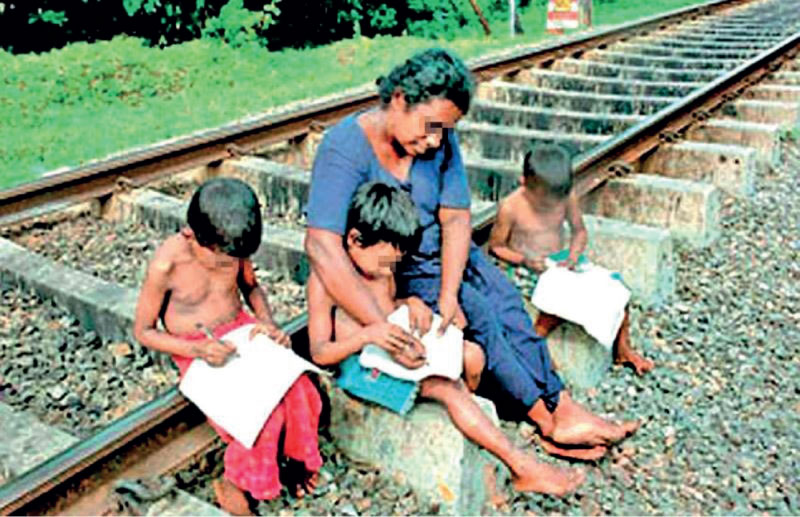
How we treat the future
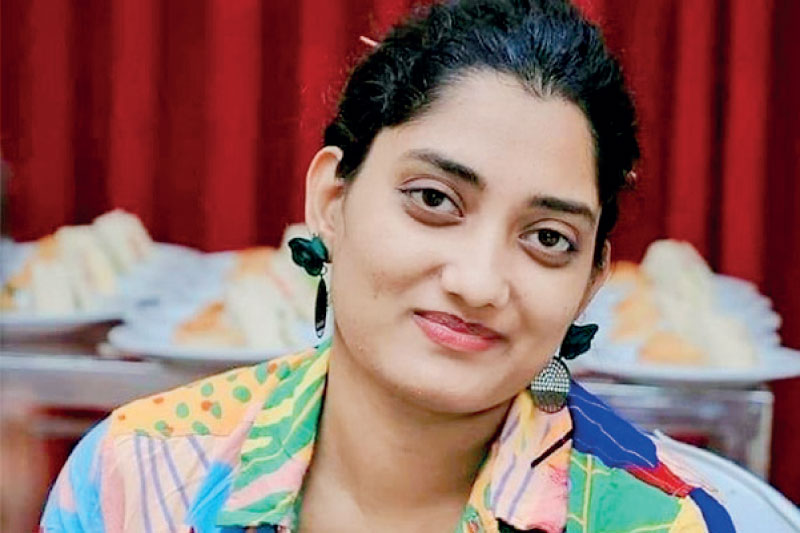
Humour remanded
“…Jesus Christ Superstar,
Do you think you’re what they say you are?
Did you mean to die like that? Was that a mistake, or Did you know your messy death would be a record breaker?”
– Jesus Christ Superstar (Andrew Lloyd Webber, Tim Rice, 1971, sung by Carl Anderson)
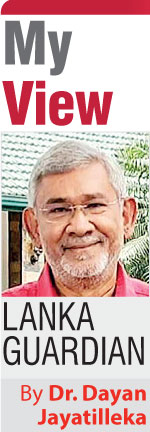 Speaking strictly for myself, let me pre-emptively answer the blunt question directed at anyone who objects to the harsh treatment of Nathasa Edirisooriya, namely: “what would you say if such disrespect was displayed towards your religion?”
Speaking strictly for myself, let me pre-emptively answer the blunt question directed at anyone who objects to the harsh treatment of Nathasa Edirisooriya, namely: “what would you say if such disrespect was displayed towards your religion?”
It was on Vatican Radio, while travelling in Europe, that I first heard the whole of the Jesus Christ Superstar double-album with its brilliantly irreverent, borderline ‘blasphemous’ opening questions (“Jesus Christ, Jesus Christ/Who are you?/What have you sacrificed?”), Herod’s campy mockery of Jesus, and Mary Magdalene’s romantic song (“I just don’t know how to love Him”). I bought and treasured the album. My mother Lakshmi de Silva, a Catholic and former teacher at St. Bridget’s Convent (Sunethra and Chandrika were among her pupils) took me for the premiere of the movie at a Leicester Square cinema. That was a half-century ago. So far, nobody from the world’s 2.6 billion Christians has called for the lynching, legal or otherwise, of Andrew Lloyd Webber and Tim Rice.
The template that Nathasha Edirisooriya’s comic act, including the cultural spoofs, is recognisably derived from is ‘The Kumars at No 42’. But the outcome is beginning to look more like what befell Salman Rushdie or Malala.
Ms. Edirisooriya, a young comedienne critiquing the huge pressure to perform competitively that parents bring upon their children while comparing them unfavourably with their peers, and using as a satirical reference point in her mimicry of such parental discourse, “Suddhodana’s son” in his infancy, i.e., well before he left the palace and three-and-a-half decades before he attained Enlightenment and became The Buddha, is imprisoned for an attack on The Buddha and/or Buddhism, i.e., his dharma (doctrine).
The local Fox News ‘twin stations’ are inciting hatred against Nathasha Edirisooriya and her young colleagues.
Being caught on camera having applauded her skit could cause the Police to descend. (Did you attend Natasha’s comedy show? Police will quizz you – Top Story | Daily Mirror) That’s not Buddhism, that’s Orwell out of Kafka. Irrationality and intolerance are weaponised in the name of the most rational and tolerant of meta-thinkers, never pausing to ask “what would the Buddha say about this matter?”.
It isn’t merely Ms. Edirisooriya who has been arrested and is detained; it is also the free, democratic, expressive, open, egalitarian and pluralist culture—a refreshing postwar ‘rainbow culture’—of the Aragalaya generation.
Welcome to the neoconservative cultural counterrevolution, the next stage of the Presidential denunciation of the Aragalaya and the witch-hunt of Aragalaya-generation activists, including activists in the arts and culture. Nathasha’s detention shows the revival of old neocon religious Right ideology as the dominant norm of the State.
Cultural closure follows political closure. The political system is closed with the induced coma of local authorities and provincial council elections. The Election Commissioner confesses that there is nothing more he can do because the regime has de-funded elections. What is the guarantee that the funds for Presidential election 2024 will not be similarly withheld by Finance Minister Ranil Wickremesinghe?
Be it the dengue epidemic or the ethnoreligious/ethno-regional friction in the East, things are deteriorating because of the absence of functioning, elected local authorities and provincial councils. Just when the NPP-JVP campaign for democratic reopening through the holding of local government elections is due to commence (8 June), the religious Right is reactivating/being reactivated against the Left-led resistance.
At the 1947 General Election the conservative UNP administration instrumentalised religion against the Left. It also used violence, rendering the Communist Party activist father of Rohana Wijeweera bedridden for life.
Reality check
This is a crisis of poverty and hunger. This is the year of the semi-starving child.
Our sister paper’s Expose column by Prageeth Sampath Karunathilaka was illustrated with a photograph of three schoolkids being instructed in their homework by an elderly woman while seated on the rail-tracks in the scorching sun. The Expose is reinforced by a conversation with a former Director of Agriculture, K.B. Gunaratne. Extracts follow:
 ‘Based on recent reports from the Central Bank, the World Bank, the World Health Organization, and the Food and Agriculture Organization, Sri Lanka is currently facing a deeply distressing situation, with children being the most affected. A concerning situation revolves around the future of Sri Lankan children who are grappling with malnutrition…
‘Based on recent reports from the Central Bank, the World Bank, the World Health Organization, and the Food and Agriculture Organization, Sri Lanka is currently facing a deeply distressing situation, with children being the most affected. A concerning situation revolves around the future of Sri Lankan children who are grappling with malnutrition…
 The latest report from the Central Bank of Sri Lanka reveals that over 40 percent of the country’s population has reduced their allocation towards education and health. This is due to the financial burden caused by food expenses... The nutrition intake has been reduced as well making them vulnerable to fall prey to malnutrition.
The latest report from the Central Bank of Sri Lanka reveals that over 40 percent of the country’s population has reduced their allocation towards education and health. This is due to the financial burden caused by food expenses... The nutrition intake has been reduced as well making them vulnerable to fall prey to malnutrition.
 At present, 43 percent of children under the age of five in Sri Lanka suffer from malnutrition.
At present, 43 percent of children under the age of five in Sri Lanka suffer from malnutrition.
 1.4 million schoolchildren are also affected by malnourishment.
1.4 million schoolchildren are also affected by malnourishment.
 This issue is severe in districts such as Ampara, Anuradhapura, Polonnaruwa, and Nuwara Eliya.
This issue is severe in districts such as Ampara, Anuradhapura, Polonnaruwa, and Nuwara Eliya.
 One-third of schoolchildren in these districts lack access to proper food and one-fifth of all children suffer from malnutrition.
One-third of schoolchildren in these districts lack access to proper food and one-fifth of all children suffer from malnutrition.
 Over the past two years, there has been a 75 percent increase in the average family’s expenditure on both food and miscellaneous items.
Over the past two years, there has been a 75 percent increase in the average family’s expenditure on both food and miscellaneous items.
 According to a Central Bank report…the country’s gross domestic product (GDP) had experienced a decline of 4.6 percent in 2022, followed by a further drop of 7.8 percent in 2023.
According to a Central Bank report…the country’s gross domestic product (GDP) had experienced a decline of 4.6 percent in 2022, followed by a further drop of 7.8 percent in 2023.
 Sri Lanka ranks 4th in the world in food inflation and 6th regarding child malnutrition… By the year 2021, 12.7 percent of Sri Lanka’s population was classified as impoverished. …The number of impoverished families increased to 26 percent by 2022. This figure further escalated to 37 percent by 2023…
Sri Lanka ranks 4th in the world in food inflation and 6th regarding child malnutrition… By the year 2021, 12.7 percent of Sri Lanka’s population was classified as impoverished. …The number of impoverished families increased to 26 percent by 2022. This figure further escalated to 37 percent by 2023…
 Merely 0.2 percent of the working population in Sri Lanka possesses the means to afford goods amounting to $1.90 per day. Additionally, the unemployment rate stands at 5.2 percent. 7 out of every 1,000 children born in Sri Lanka do not live to see their 5th birthday.
Merely 0.2 percent of the working population in Sri Lanka possesses the means to afford goods amounting to $1.90 per day. Additionally, the unemployment rate stands at 5.2 percent. 7 out of every 1,000 children born in Sri Lanka do not live to see their 5th birthday.
 In February 2022, the poverty line in terms of monthly income stood at Rs. 5,972, but within a short span of 10 months, it increased to Rs. 13,777 by December 2022…
In February 2022, the poverty line in terms of monthly income stood at Rs. 5,972, but within a short span of 10 months, it increased to Rs. 13,777 by December 2022…
 Simultaneously, as of 2022, the poverty rate in Sri Lanka has surged to 25.6 percent. This reveals that ¼ of the country’s population requires subsidies to meet their basic needs…’ (No proper food for one-third of schoolchildren - Expose | Daily Mirror)
Simultaneously, as of 2022, the poverty rate in Sri Lanka has surged to 25.6 percent. This reveals that ¼ of the country’s population requires subsidies to meet their basic needs…’ (No proper food for one-third of schoolchildren - Expose | Daily Mirror)
|
Political paradoxes
This crisis requires a two-track solution: poverty reduction and economic growth. Growth that drastically reduces poverty, and poverty reduction that jump-starts rapid economic growth. That describes President Premadasa’s political economy.
The SJB which should have been the fastest growing Opposition party during a poverty pandemic as the party with the franchise on the Ranasinghe Premadasa model—a proven success still in the public memory—has ignored that paradigm which contains the best solution for the Sri Lankan crisis.
Premadasa’s winning manifesto was entitled ‘A New Vision & a New Deal’. The SJB’s Economic Blueprint contains an old vision and an old deal. The Blueprint makes no mention of President Premadasa, still less of social democracy which Sajith says the party is committed to. It is a throwback to the inequity-generating economic model of the UNP Establishment which Premadasa repeatedly cautioned against and held responsible for the Southern civil war. When superimposed on the economics of President Wickremesinghe, the Blueprint fits perfectly, with its positive references to his stints of 2001-4 and 2015-2019.
The SJB economic troika’s ignorance of contemporary economic thinking in Western liberal-democracy is evident. ‘How Should America Lead?’ is the cover story of The Economist, London (May 20th-26th 2023). The Economist evaluates ‘America’s Plan for the 21st Century’ via the ideas of top strategist and policy intellectual Jake Sullivan, President Biden’s National Security Advisor (bullet-points are mine-- DJ):
 “…Jake Sullivan repudiates the free-market Washington Consensus and calls for the government to play a muscular role in society…
“…Jake Sullivan repudiates the free-market Washington Consensus and calls for the government to play a muscular role in society…
 This means hyperactive industrial policy. Big subsidies will catalyse private investment in semi-conductors and clean energy.
This means hyperactive industrial policy. Big subsidies will catalyse private investment in semi-conductors and clean energy.
 Export controls will create “a small yard and high fence” …
Export controls will create “a small yard and high fence” …
 State intervention and protectionism will boost industry, helping the middle class and cooling America’s populist fevers...” (The Economist May 20th 2023, p 9)
State intervention and protectionism will boost industry, helping the middle class and cooling America’s populist fevers...” (The Economist May 20th 2023, p 9)
While the SJB policy elite fails to analyse the UNP’s three decades of defeat and secular decline –except to shriek ‘racists’, ‘serfs’—Obama-Biden administration whizz-kid Jake Sullivan began critiquing neoliberal globalisation soon after the US Democrats led by Hillary Clinton lost the blue-collar heartland to Trump.
Sullivan identified (as the SJB hasn’t) the main political challenge as winning back the working people/middle classes and thereby the states that had swung from blue to red. He nailed the nexus between a polarising neoliberal-globalist economic policy, alienation of the working classes and middle classes, the blowback of toxic (Trumpian) nationalist populism, and distortion of America’s global profile.
Premadasa perspective
The record proves the Premadasa model worked. It was perfectly possible to do both growth and equity simultaneously. The following quotes illustrate the Premadasa policy paradigm:
 “A nation is like a pyramid…We must realize that everyone big and everything big is supported from the base provided by everyone small and everything small. After all, the millions of small people –the workers and the peasants—are the hardcore of our society. They are the very foundations of our country.”
“A nation is like a pyramid…We must realize that everyone big and everything big is supported from the base provided by everyone small and everything small. After all, the millions of small people –the workers and the peasants—are the hardcore of our society. They are the very foundations of our country.”
(Premadasa, Kataragama GamUdawa June 23rd 1987)
 “Whatever development we may bring about should be to be to benefit the poor. Development in any sense should help people live. Our party is aware that there is no meaning in any development that keeps people in hunger and in malnutrition, leading to death.”
“Whatever development we may bring about should be to be to benefit the poor. Development in any sense should help people live. Our party is aware that there is no meaning in any development that keeps people in hunger and in malnutrition, leading to death.”
(Premadasa, Providing Assets to the Assetless, Feb 13th 1989)
 “I consider it a crime to tolerate poverty in any society”.
“I consider it a crime to tolerate poverty in any society”.
(Premadasa, A Charter for Democracy 1990)
 “Poverty is the greatest social disease of many countries. It has reached epidemic proportions in much of the Third World. Epidemics are emergencies. Emergencies do not have the luxury of leisurely solutions!”
“Poverty is the greatest social disease of many countries. It has reached epidemic proportions in much of the Third World. Epidemics are emergencies. Emergencies do not have the luxury of leisurely solutions!”
(Premadasa, Inaugural Address, Janasaviya Trust Fund, BMICH, May 25th 1991)
 “Poverty has a direct bearing on children’s welfare. Poverty in fact is the chief enemy of children. Hunger, disease, illiteracy and may I say, lack of hope, arise out of poverty. We shall overcome these obstacles…We will give pride of place to our children and their well-being. Our people and their children must live. They need not die of lack of food or lack of water or lack of medicine. Our children need not grow in a situation of illiteracy. They need not be neglected. They need not be abused. Today, we dedicate ourselves to provide for and to protect ‘the father of man’—the child.”
“Poverty has a direct bearing on children’s welfare. Poverty in fact is the chief enemy of children. Hunger, disease, illiteracy and may I say, lack of hope, arise out of poverty. We shall overcome these obstacles…We will give pride of place to our children and their well-being. Our people and their children must live. They need not die of lack of food or lack of water or lack of medicine. Our children need not grow in a situation of illiteracy. They need not be neglected. They need not be abused. Today, we dedicate ourselves to provide for and to protect ‘the father of man’—the child.”
(Premadasa, SAARC Conference on Children, BMICH, Sept 16th 1992)
The country’s poverty pandemic cries out for the re-adoption of Premadasa’s political economy.
|
SJB vs. JVP-NPP
The NPP-JVP is running ahead of the SJB in the IHP/SLOTS poll of current voter preferences at Presidential and Parliamentary elections. (A.K. Dissanayake Still on Track for President – Groundviews)
Sajith Premadasa, though less popular currently than Anura Kumara Dissanayake, is clearly more popular than his party. He is at 37% while the SJB is at 30%. Therefore, the SJB’s frontline MPs should take the cue from their leader Sajith on economic policy. Instead, they take their economic cue from Ranil, who taught them German Christian Democracy’s ‘social market economy’, rather than from Sajith who advocates ‘social democracy’-- so maybe they regard Ranil as their real leader.
Povertisation and immiserisation explain not only the JVP-NPP’s sustained lead in the public opinion polls, but the retention of Marxist-Leninist symbolism at on May Day 2023. Socioeconomic dynamics are generating a grassroots surge for rapid radical change. This was already signalled by opinion polls, with 49% supporting socialism and only 22% endorsing capitalism, with only 17% opposed socialism while 44% opposed capitalism. (Widespread public support for Aragalaya but Lankans are souring on capitalism: Poll | Daily FT)
The SJB is running behind the JVP-NPP in the Sinhala heartland. By permitting its economic ideologues to profile it as a centre-right party rather than a Premadasaist-populist one, the SJB has trapped itself in the post-Premadasa UNP urban enclave plus a few provinces with a large minority vote-- which may vote Ranil-- instead of winning over the Sinhala heartland as Premadasa did. The SJB pulled back from its peasant-outreach events including in the NCP and is silent on President Premadasa’s program of redistributing state lands free to the landless.
The JVP-NPP which had 3% in August 2020, has grown exponentially, overtaking the SJB which had a seemingly unassailable lead at the time.
The IHP/SLOTS survey shows the JVP-NPP winning 52% of the disaffected MR/Pohottuwa vote while the SJB has won only 22%. Abandoning Hirunika Premachandra’s brilliant sloganistic coinage “Ranil Rajapaksa”, the SJB goes softer on Ranil than on the Rajapaksas.
Disenchanted MR/SLPP voters opt mostly for the JVP-NPP because there is no social democratic populist SJB outreach, unlike Biden retrieving the blue-collar vote and flipping red/swing states.
MR-GR voters shift to the JVP-NPP also because they were allies during the war, while the SJB—with the glorious exception of the (underutilized) Sarath Fonseka—was with Ranil throughout his conspicuous Chamberlainesque collaboration with Prabhakaran. By contrast, when he was in Chandrika’s Cabinet, MR dissented on the PTOMS. Slamming back the SJB’s accusation that the JVP campaigned for MR in 2005, Sunil Handunetti pointedly reminded TV audiences that had Ranil won, Prabhakaran would still be alive and the Tigers unvanquished.
If the SJB at 30% aligns with the UNP at 9%, it won’t necessarily outpoll the JVP-NPP. Most of the SJB’s 30% accrues from Premadasa populism which could switch to the JVP-NPP as ‘left populist’ change-agent.
There are no mass demonstrations by the SJB against ‘Ranil Rajapaksa’ on the grounds of election strangulation and economic sadism. The SJB telephoned Ranil to secure a delay of the Central Bank bill. Prof Howard Nicholas, a vastly more literate economist than the SJB’s entire Economic Policy Unit, has made a devastating televised critique of Central Bank ‘independence’.
Plainly, none of President Premadasa’s programs would have been/would be possible with a totally ‘independent’ Central Bank technocratic ‘tzar’ plugged into the IMF-global currency matrix. Yet the SJB expresses agreement ‘in principle’ with the IMF idea of Central Bank ‘independence’, while demurring on details.
The SJB reiterates its “readiness to support the President’s progressive measures”, implying an autocratic incumbent without a popular mandate is capable of them.
Champika Ranawaka makes more economic-developmental sense than the SJB’s troika, and is more of an asset in the heartland than they are. His egocentric exit and latest political cult will cost him and the SJB.
The SJB Economic Blueprint’s fans will vote Ranil. Sajith can’t win the presidency on that policy platform. He can only do so on President Premadasa’s. 2024 is Premadasa centenary year.
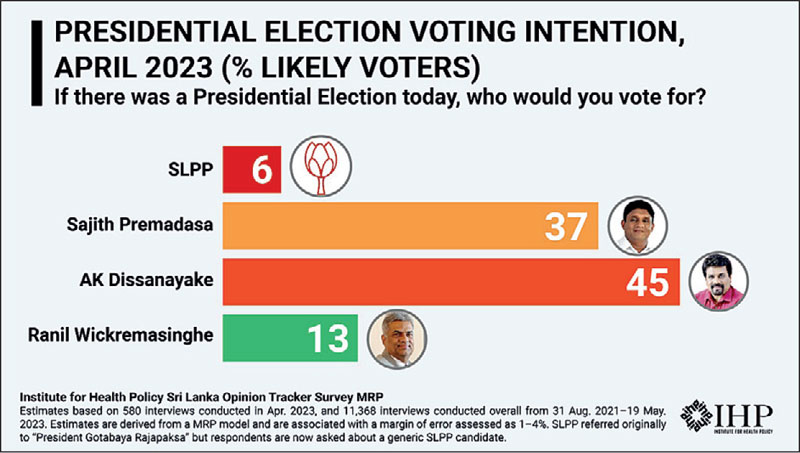
Anura ahead
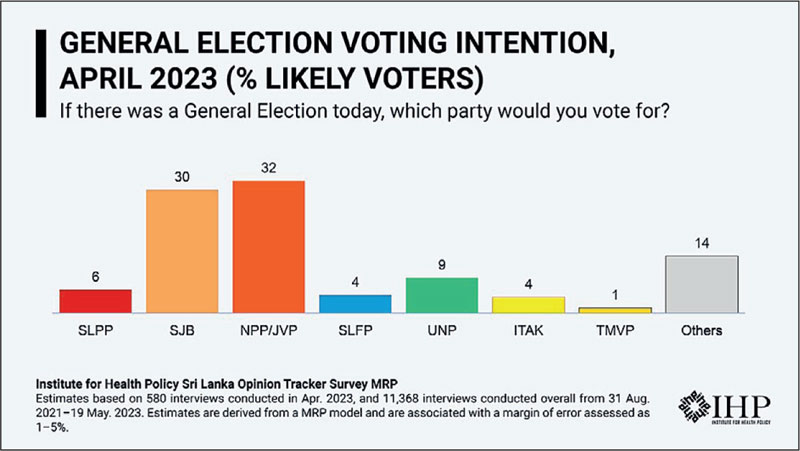
Static SJB

GR voters go AKD
Discover Kapruka, the leading online shopping platform in Sri Lanka, where you can conveniently send Gifts and Flowers to your loved ones for any event including Valentine ’s Day. Explore a wide range of popular Shopping Categories on Kapruka, including Toys, Groceries, Electronics, Birthday Cakes, Fruits, Chocolates, Flower Bouquets, Clothing, Watches, Lingerie, Gift Sets and Jewellery. Also if you’re interested in selling with Kapruka, Partner Central by Kapruka is the best solution to start with. Moreover, through Kapruka Global Shop, you can also enjoy the convenience of purchasing products from renowned platforms like Amazon and eBay and have them delivered to Sri Lanka.
Discover Kapruka, the leading online shopping platform in Sri Lanka, where you can conveniently send Gifts and Flowers to your loved ones for any event including Valentine ’s Day. Explore a wide range of popular Shopping Categories on Kapruka, including Toys, Groceries, Electronics, Birthday Cakes, Fruits, Chocolates, Flower Bouquets, Clothing, Watches, Lingerie, Gift Sets and Jewellery. Also if you’re interested in selling with Kapruka, Partner Central by Kapruka is the best solution to start with. Moreover, through Kapruka Global Shop, you can also enjoy the convenience of purchasing products from renowned platforms like Amazon and eBay and have them delivered to Sri Lanka.